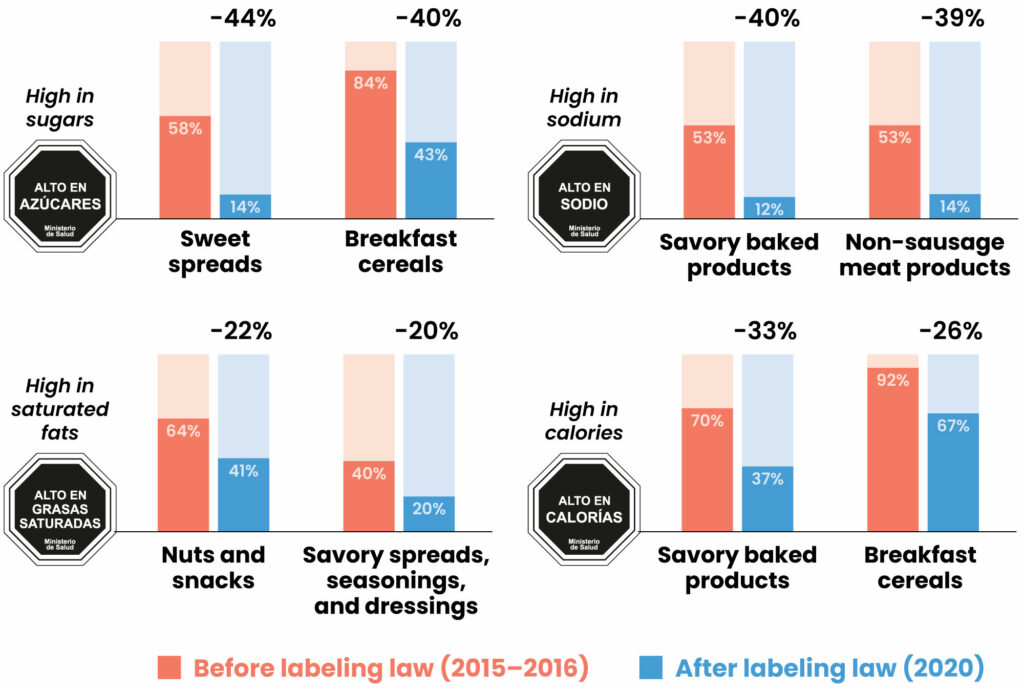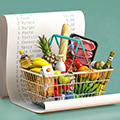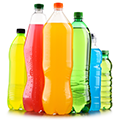Chilean food supply sees substantial decreases in sugar, sodium, and saturated fat after front-of-package warning labels required on “high in” foods and drinks
A new study published this week in BMC Medicine examining changes in Chile’s packaged food supply under the country’s mandatory front-of-package warning label law finds sweeping product reformulation to contain less sugar, sodium, saturated fat, and calories. The amount of foods and drinks in Chilean stores that would need “high in” nutrient warning labels dropped from 71% before the law in 2015–2016 to 53% after the law’s third and most strict phase went into effect in 2020.
While the proportion of “high in” products and content of concerning nutrients decreased across all food and beverage categories, researchers saw the greatest reductions in sodium in savory foods and sugars in sweet foods and beverages. Changes in products’ saturated fat content were smaller; however, researchers did find a 20+ percentage point decrease in the proportion of nuts, snacks, and savory spreads requiring warning labels for high saturated fat content. They also found a greater than 20 percentage point drop in savory baked products, breakfast cereals, and savory spreads requiring “high in calories” warning labels.
Food categories with greatest changes in “high in” nutrient or calorie content before and after Chile’s labeling law

“We know that before this law, there were almost no significant nutritional improvements in the packaged food supply,” said the study’s first author Natalia Rebolledo, PhD, assistant professor of nutrition at the University of Chile’s Institute of Nutrition and Food Technology. “We also know that voluntary labeling policies have produced minimal changes in product formulation. This study underscores how much more effective a mandatory warning label regulation can be.”
This study highlights one of several ways that front-of-package warning labels work to improve population nutrition: by encouraging the food industry to offer healthier products. Companies wishing to avoid adding warning labels to their packages have an incentive to reduce sugar, sodium, saturated fat, and calorie density in their products. Indeed, this study found that product changes increased as the regulation’s nutritional thresholds tightened with each phase.
Additionally, warning labels nudge consumers towards healthier options or portion sizes as they’re shopping or making food choices at home, and in Chile, the labels are also linked to companion policies that restrict marketing to children and ban sales or promotion in schools for any product with a warning label.
To track changes in the food supply, researchers at the University of Chile photographed thousands of packaged food and beverage products from supermarkets in Santiago, Chile every year from 2015 and 2020. They worked with researchers at the University of North Carolina at Chapel Hill to record nutrition facts panel information for these products, then analyzed how their nutritional profiles changed as the three increasingly strict phases of the Chilean labeling law came into effect.
This study is the latest in a series of policy evaluations showing improvements in the nutritional quality of Chilean’s food purchases, changes in social norms and knowledge around foods and drinks with warning labels, and significant drops in children’s exposure to harmful food marketing. Chile now serves as a model for countries aiming to combat high and rising rates of obesity and other nutrition-related diseases by improving the food environment.
This research was supported by Bloomberg Philanthropies at part of the Food Policy Program, with additional support from INTA-UNC, INFORMAS, the International Development Research Centre (IDRC), and the ANID/Fondo Nacional de Desarrollo Científico y Tecnológico-FONDECYT Postdoctorado.
STUDY 1 AUTHORS
Natalia Rebolledo
Pedro Ferrer-Rosende
Marcela Reyes
Lindsey Smith Taillie
Camila Corvalán
Read more in BMC Medicine

MORE RESEARCH FROM CHILE:

Chileans bought less sugar, salt, saturated fat, and calories at the grocery store after trailblazing warning label law, with high compliance from the food industry Read more…

Products changed, but not prices, under Chile’s Law of Food Labeling and Advertising Read more…

Children in Chile saw 73% fewer TV ads for unhealthy foods and drinks following trailblazing marketing restrictions Read more…

After Chile’s labeling and marketing law, drink purchases contained less sugar and more non-nutritive sweeteners, but overall sweetness stayed the same Read more…
Study finds no negative economic impact from Chilean food labeling and advertising law Read more…
